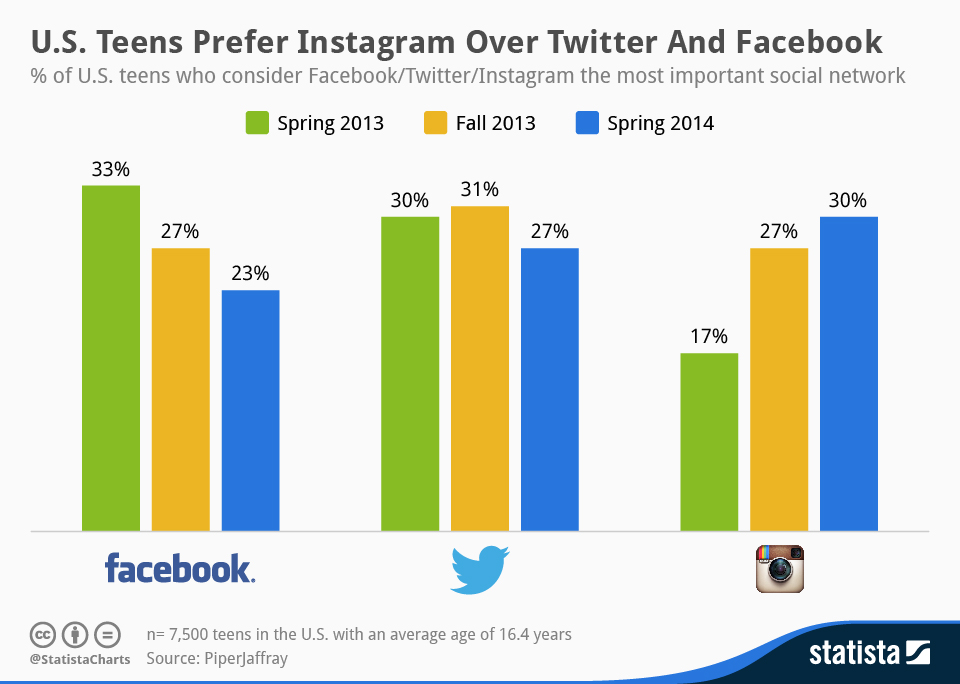
How do Higher Ed Institutes market to High School Students?
If you know a little bit about our agency, you’ll know that several of our past campaigns have been with post-secondary institutions such as College of Opticians Alberta or Vancouver Island University. – and many of these campaigns have been aimed at recruiting high school students. In the past, high school students were Gen Y’s/Millenials, but now, the under 18’s are tentatively labelled Generation Z, and post-secondary institutions need to take note.
Gen Z is different than Gen Y, and this blog post is going to tell you all about them, and what you should be doing to attract them.
So, what are high school like students right now?
Some quick stats:
• Currently under 18 years of age
• Almost a quarter of the population
• 4 in 5 believe they are more driven than their peers
• They appreciate genuinity
• They did not witness the internet revolution; internet has existed from their very beginning
• They are digital natives
• They are visual creatures
• They have a short attention span
• They are research aficionados – they will research everything
According to McCann London’s head of consumer trends and insight, Dean Ashraf, young people increasingly believe that older generations and those in authority do not understand them – and who can blame them?
Research has shown that Gen Z feels far savvier than its elders give them credit for. The desperate attempts by some brands to be “cool” rather than truly connecting and listening to the youth shows the outdatedness of traditional marketing strategies.
XYBOOM, an intergenerational organization founded by our agency founder, has highlighted the issues of communication between different generations. More often than not, marketing decision makers are using methods that worked with Generation Y (sometimes X) and aren’t properly connecting with Generation Z. Learn more about intergenerational communication issues here.
As a Post-Secondary institution, how can I attract high school students?
1. “CREATE COOL” RATHER THAN “LOOK COOL”
A brand attempting to shift its image to “look cool” is an overused solution when marketing to youth. In many ways, focusing on “looking cool” is insulting to Gen Z. They’ve grown up in a multi-screened world where constant advertising is second nature. There is a hidden mutual agreement between Gen Z and brands; they’ll support you if they believe in what you’re doing. Don’t try to trick them by “looking cool”, have them trust you by being transparent and “creating cool”. Give them something valuable and of substance – that’s how you “create cool”. As mentioned above, they are research aficionados, so “looking cool” isn’t enough if you’re not giving them something useful.
Forbes adds to this point:
The general stigma about this demographic is that they text with ‘LOL’ and ‘JK’ while going to the movies on their skateboard. But teens today are more like adults. They know more than you think, and they want to be treated like adults in return.
Don’t try to play down your marketing strategy. Refrain from using texting slang — and stay away from words like ‘YOLO’ and ‘swag.’ These are immediate turn-offs.
Nike is an excellent example of “creating cool” via Marketing Magazine UK
If you look at Nike’s social media presence, rather than talking about its products –- ie, new running shoes – Nike engages with its followers as if it were one of them, sharing favourite training routes, times, personal bests and tips.
2. REMEMBER THAT EVERYONE IS UNIQUE
If you’ve read our post on building a tribe of followers, you’ll know that we didn’t broadly target all of Generation Z, but instead, found a group of individuals that aligned with the brand’s values. It provides your target an opportunity to join the brand, not just choose it.
With the internet, it is easier for Generation Z to find communities that align with their values. Research shows that 28% admit that online networks make them feel part of something.
The key to marketing to a generation that feels entitled to everything is to treat its members as unique, rather than taking blanket communications approach, offering rewards for their time and engagement.
As a post-secondary institution, you must find the tribe that your organization is meant to lead.
3. BE EASY
You have a lot of competition for the attention of Generation Z. As mentioned above, they have a short attention span, so you better engage ’em, or risk losing ’em. This short attention span comes with everything – not just the initial engagement. They don’t have the patience to take that extra step to share, or access, or anything. Making everything easy is incredibly hard.
For example, our award winning campaign with Vancouver Island University used Instagram, a platform where 30% of Generation Z label as “the most important social network” ahead of Facebook and Twitter (and that number is continually rising). Another 2013 Canadian & U.S. study confirmed that Instagram is most popular among Gen Z respondents, with 30.8% reporting adoption.

Image via www.statista.com
We also implemented various strategies to make the experience more seamless for Generation Z; whether it be a low barrier of entry, concise messaging, and simple Instagram processes that they were already used to doing on a daily basis. The four E’s to follow: Easy to share, easy to understand, easy to access and easy going.
Taking the Leap…
For a long time, Generation Y was the focus for post-secondary institutions, but now that Generation Z is the target, but the shift in strategy from Gen Y to Z hasn’t been as dramatic as it should be. Even though the XYBOOM Intergenerational Organization has accumulated knowledge, insight, data and research that highlights intergenerational communication issues, many post-secondary institutions have yet to take the leap and shift the way they develop recruitment campaigns for Generation Z. We’ve seen far too many rehashed strategies that have worked with Gen Y (and even Gen X) still being implemented today. We’ve had speakers and participation from various post secondary institutions across B.C. as well as weekly “intergenerational insight” meetings that keep us continually educated on the topic, and there’s no doubt that intergenerational communication issues are still very prevalent.
Our latest Generation-Z-targeted campaign won us international awards with its innovation, and all it took was a shift in strategy. Eventually, all educational institutions will need to shift its focus to Generation Z. When do you plan to take the leap?
If you liked this article, please check out some related links of ours:
– “Time To Enroll” | Marketing Universities
– How To Market To University Students
– Honest Marketing Vs. Global Citizenship
Sources:
Statistics Canada
Meet Generation Z
The Truth About Youth: Do You Know Generation Z?
Generation Z: The Holy Grail for Brands?
Four Realities about Generation Z and Four Ways Brands Can Adapt
Five Tips for Marketing to Generation Z
Marketing Charts
If you want to learn more about specific key elements of an effective marketing plan, read our 50+ page booklet on How to Write A Strategic Marketing Plan That Yields ROI – complete with explanations




